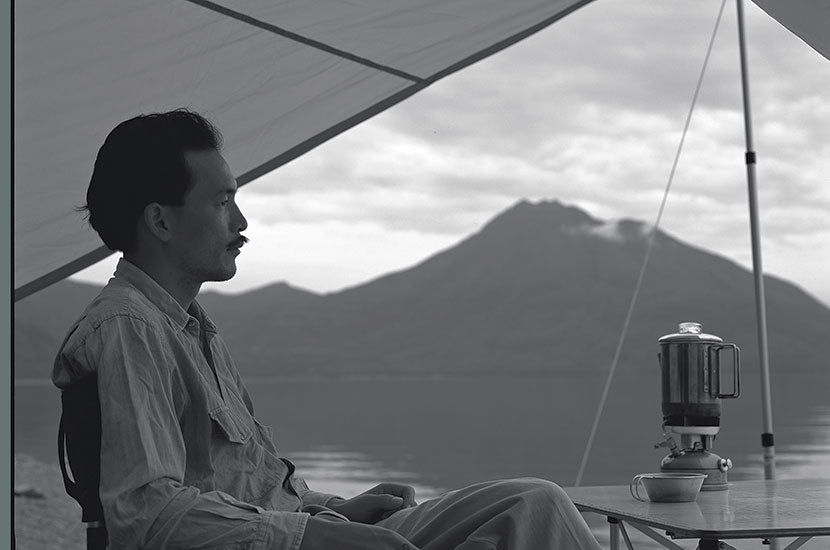When Tohru Yamai joined Snow Peak in 1986, he wanted to expand into a new market beyond the mountain climbing and fishing gear the company currently sold. Tohru was convinced he could bring an elevated car camping experience to the Japanese market. He was inspired by the time he’d spent camping and road tripping in the American West, and he felt he could build on those experiences given the growing popularity of SUVs in Japan.
While working in Tokyo, he had sensed the strong human instinct to seek out nature, and he began to notice more outdoor-oriented SUVs in Tokyo. Though they were mostly being used for city driving, Tohru knew that if he could show SUV owners an outdoor lifestyle more attuned to their vehicles customers would certainly take to it.  Tohru believed more people would enjoy time outdoors if their gear was efficient, durable and easy to set up. Then, they could spend more time creating delicious meals and reconnecting with friends and family. With these ideas at the forefront, Tohru led Snow Peak into a new era and initiated a car camping boom in Japan. Over the course of 15 years, Snow Peak released a number of products for car campers, intended to offer rejuvenating outdoor experiences. While not all of these products still exist today, many were the precursors to current items in Snow Peak’s assortment.
Tohru believed more people would enjoy time outdoors if their gear was efficient, durable and easy to set up. Then, they could spend more time creating delicious meals and reconnecting with friends and family. With these ideas at the forefront, Tohru led Snow Peak into a new era and initiated a car camping boom in Japan. Over the course of 15 years, Snow Peak released a number of products for car campers, intended to offer rejuvenating outdoor experiences. While not all of these products still exist today, many were the precursors to current items in Snow Peak’s assortment.
1987: Multi-Stand:

This product can be used as a stand for two burners or a cooler, or as a table when inserting a top. The 660mm (26′′) height was set as a comfortable standard dimension to reflect our pursuit of ease of work and comfortable living. This standard has been passed on to the IGT system and other Snow Peak furniture.
1988: Field Cooker Pro:
During this era, most camp cookers were aluminum, but for auto-camping Snow Peak developed a stainless cooker set that could withstand the strong heat of both fire and charcoal. It was said to be over-engineered when it was first released, but the cookers' durability resulted in widespread popularity. The nesting storage was also an innovation for camping cookware.
1994: Heavy Tarp:

In an era when 40D and 75D fabrics were mainstream, the Heavy Tarp was made of extremely thick 210D fabric that seemed impossible at the time. This tarp was made of double-coated with polyurethane fabric and it took experienced campers by surprise.
1995: Solid Stake:
The wind, rain and force absorbed by any tarp is transmitted right down to the pegs, and before the Solid Stake, the pegs were weak and unreliable. The Solid Stakes are forged by pounding iron bars heated at a high temperature, and are still manufactured in the Tsubame-Sanjo area of Niigata Prefecture.
1996: Takibi Fire & Grill:
During the auto camp boom, many new campsites were open fields. Campfires often left ugly burn marks on the ground. Snow Peak developed the Takibi Fire & Grill to reduce impact on the ground while enjoying a campfire. Its foldable structure made it easy to pack and store.
2000: Living Shell:

This best-selling shelter was created in response to enthusiastic requests from Snow Peak users. It has walls on all sides to keep out wind, rain, and cold air, and offers users maximum comfort. The Living Shell’s simple, yet strong frame design still lives on in current products.
Snow Peak’s foray into car camping was a pivotal point for the brand and established a new camping style focused on leisure and comfort. While our collection of camping essentials has only expanded since the 1980s, we've remained committed to creating innovative products that power restorative outdoor experiences.


